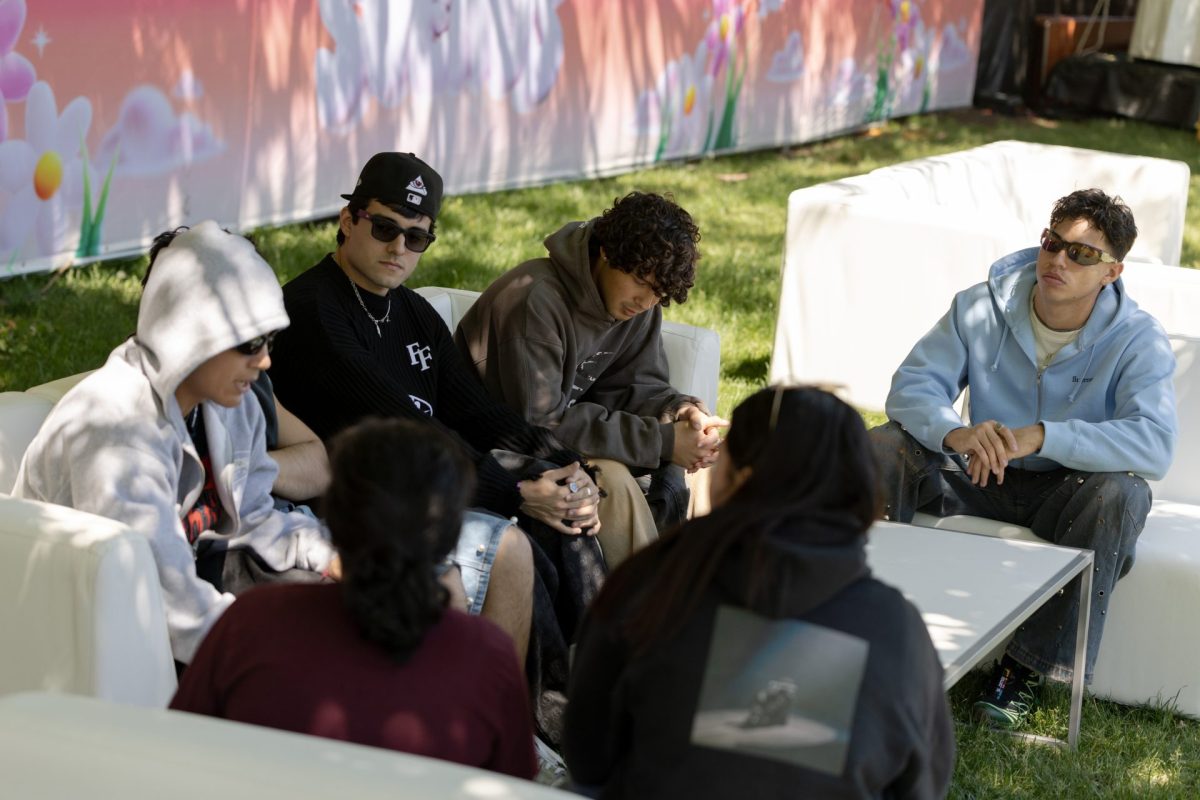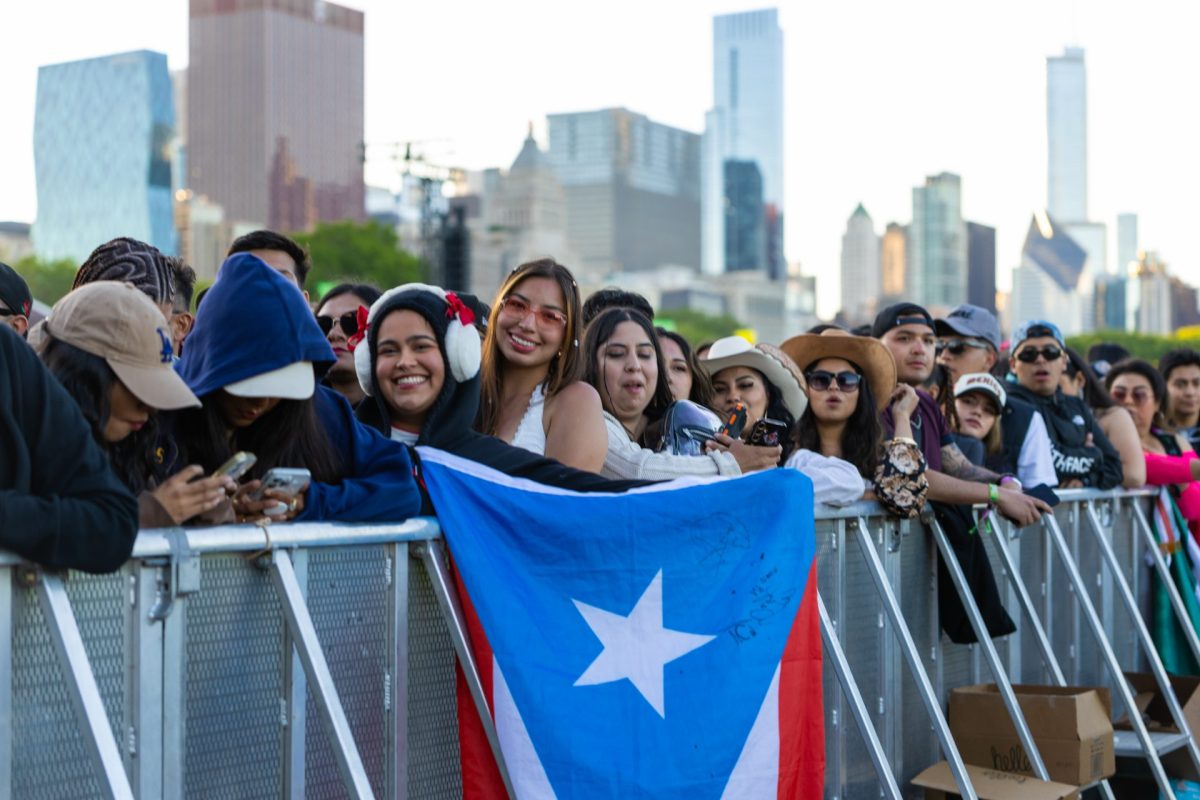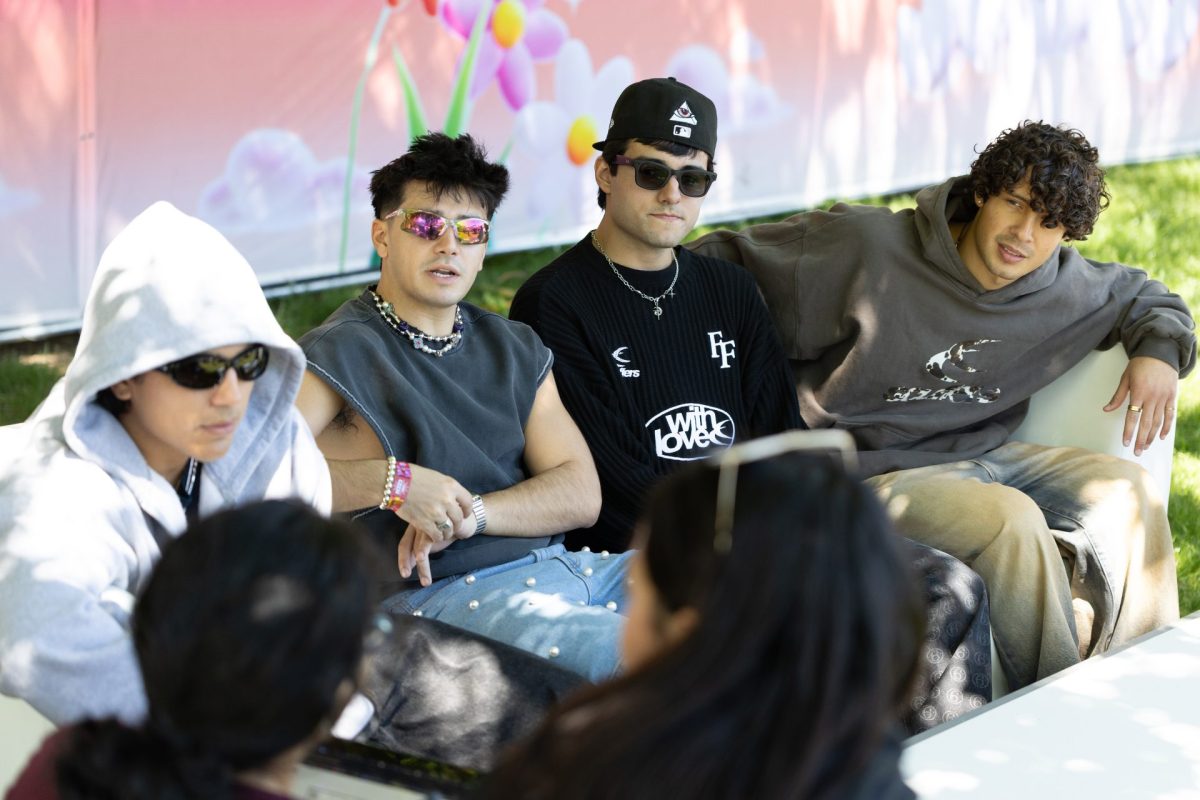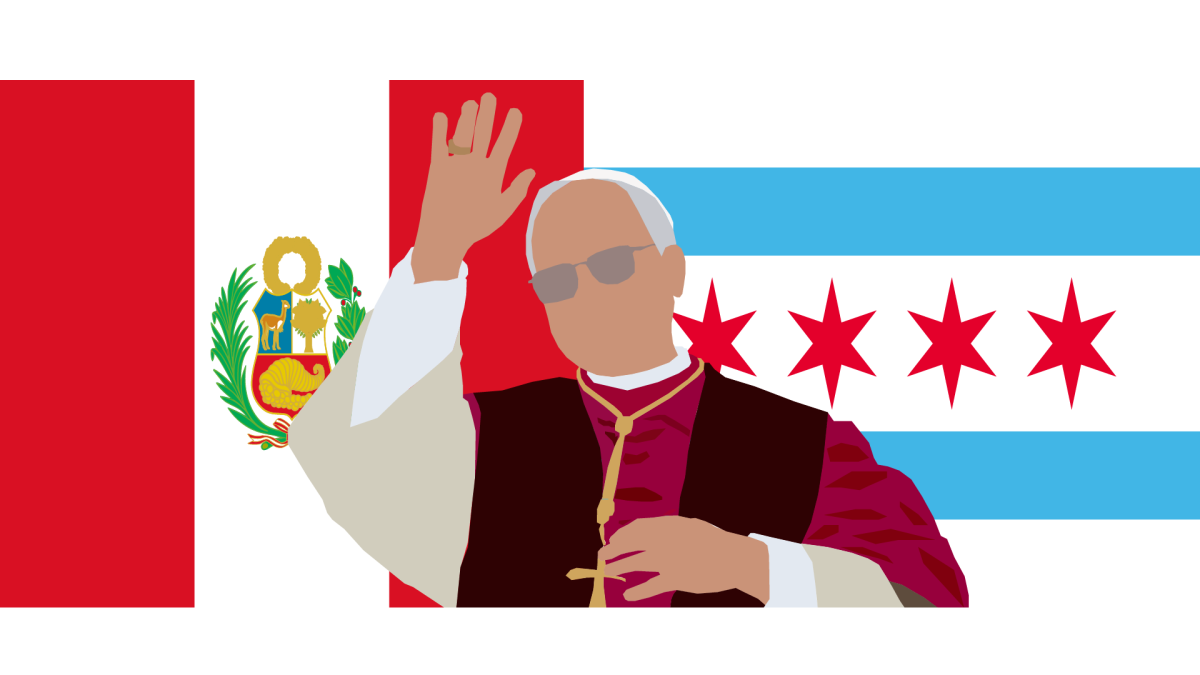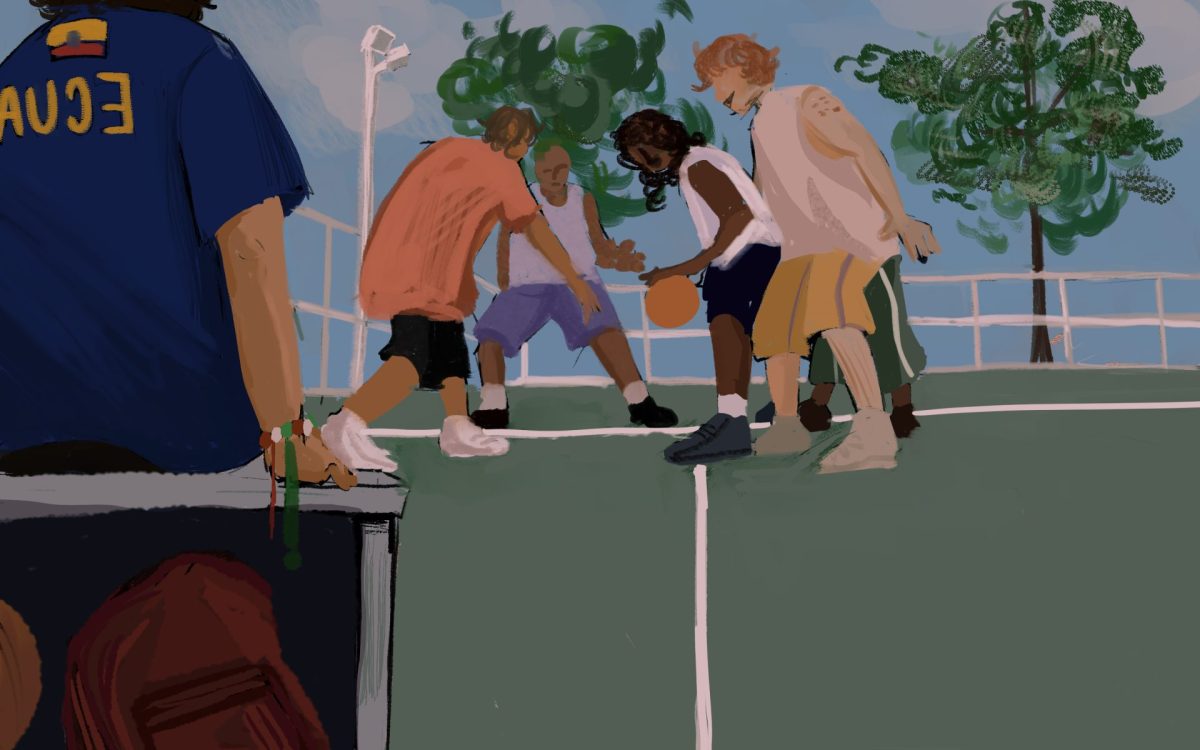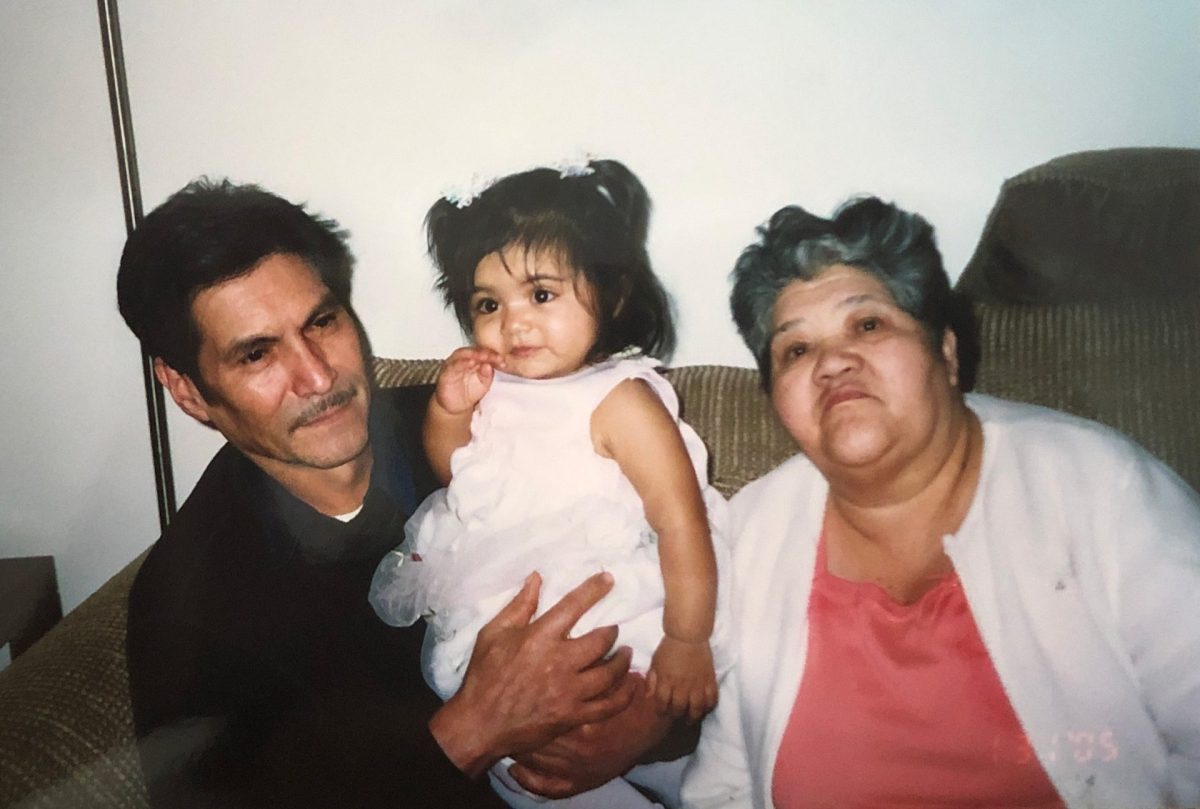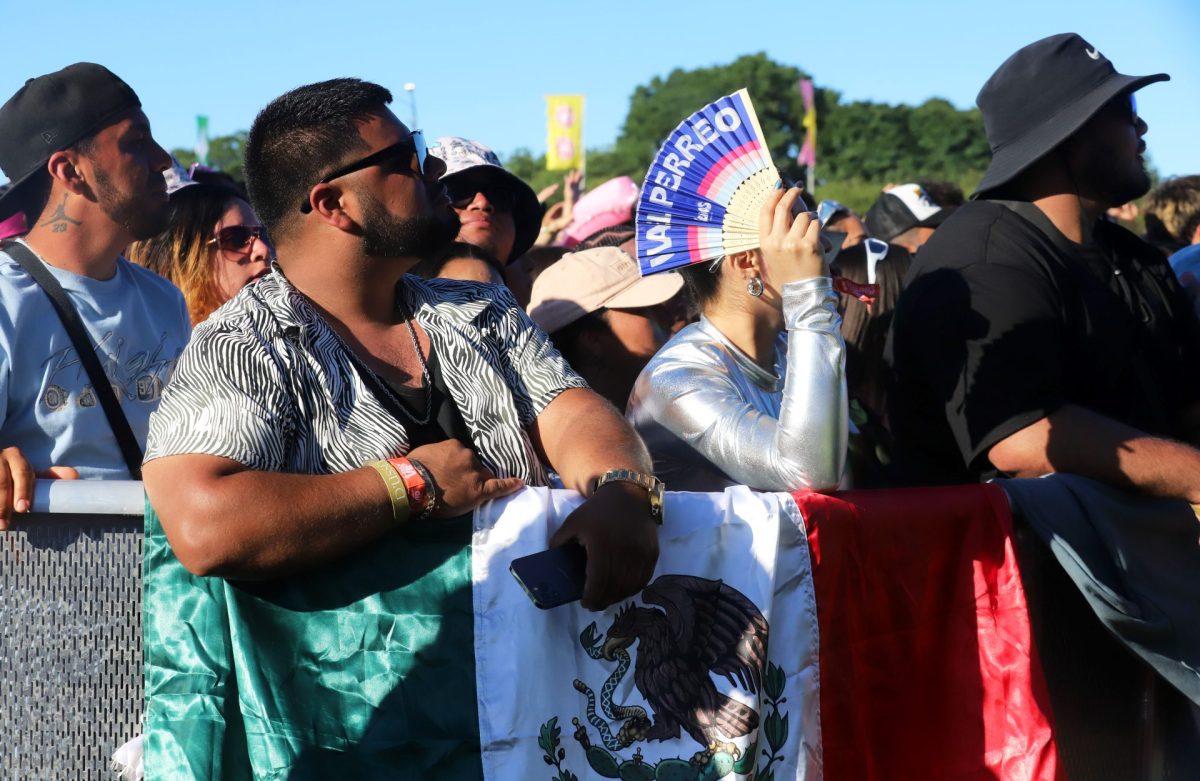Twirling in poodle skirts and greaser jackets, an ensemble of dancers paid homage to the classic Broadway musical “West Side Story” on February 17 at Chicago’s Harris Theater downtown. In between traditional musical numbers were risque burlesque performances tying in the classic tale of love with sexual health education and queer liberation.
“A West Side Story Burlesque Show” was brought to life by the AIDS Healthcare Foundation (AHF). It was brought to Chicago from New York City in collaboration with Comprensión y Apoyo a Latinos en Oposición at Retrovirus (CALOR), an organization that provides free sexual health resources for Latines.
The primary goal of the show was to encourage sexual health protection and raise awareness for STD resources for people of color.
“The idea came from educating people and advocating for safer sex practices,” said Max Alvarez, the director of events for AHF and creator of the show. “We really focused on the advocacy part, but also that it [West Side Story] is a love story people can relate to.”
Tailored around Shakespeare’s “Romeo and Juliet,” “West Side Story” follows two rival gangs, the Puerto Rican Sharks and the Caucasian Jets, in 1950s New York City. The leader of the Sharks has a sister, Maria, who falls in love with a member of the Jets, Tony. Their forbidden romance spawns violent tension between the two different cultures.
For the burlesque rendition, creative twists included changing the iconic “Jet Song” into a comedic number regarding STD testing with greasers dressed up as doctors. One burlesque danced gracefully to the romantic ode “Maria” then ripped off their dress with a transition into the more sensual cover, “Maria Maria” by Santana. This dance reflected the show’s focus on bridging the gap between love and sex.
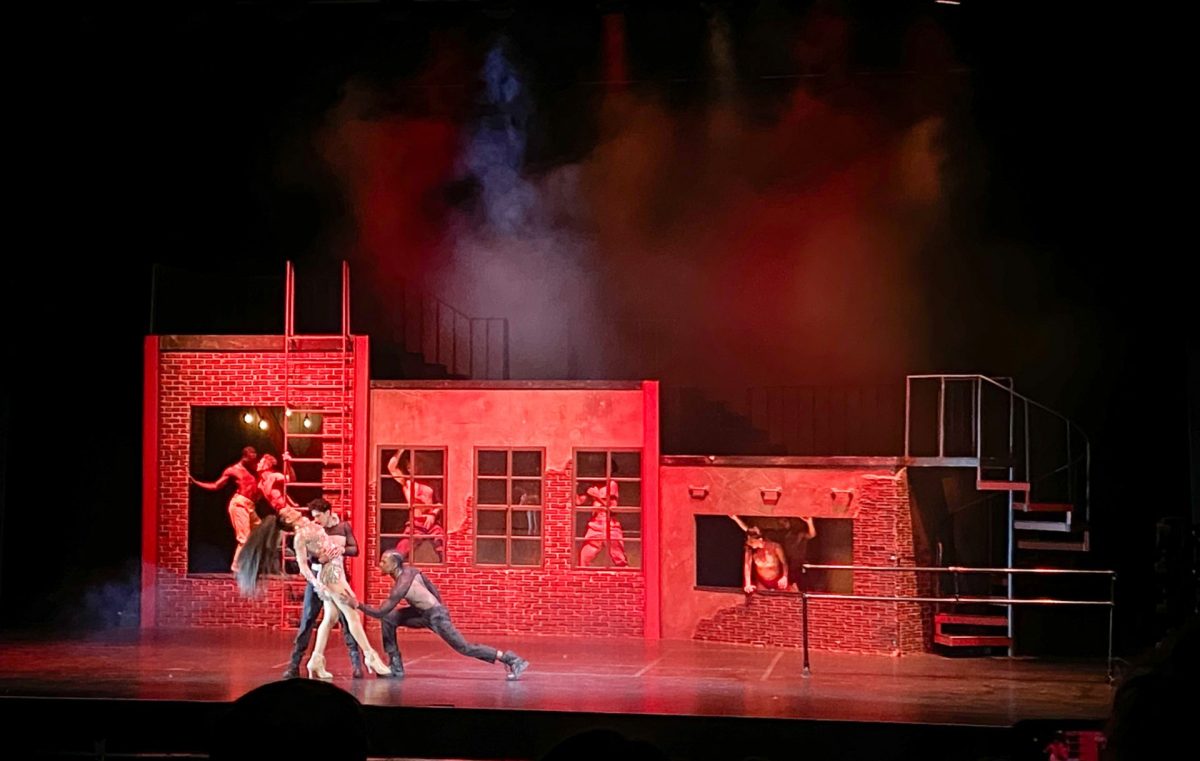
Alvarez said the original Broadway musical offers many possibilities for modern renditions, but he was able to honor the original plotline that older Latines are familiar with while adding in contemporary social themes.
“The twist is that we have gay, lesbian, nonbinary and trans dancers,” he said.
Intimate dances representing diverse and queer sexual relationships created a comedic and sensual atmosphere.
Sharon Ferguson, one of the three burlesque dancers who played the character “Pussy Control,” did a number wearing stilettos, red leather lingerie and a long whip.
“Being a part of this production and knowing that the fastest growing demographic for AIDS and HIV is among Black and brown people is very important for me to get the education concept of safe sex in every community,” she said.
Ferguson said her longtime affinity and experience in dance fits perfectly with the social justice causes for this particular performance.
“I’m always down for a cause where I can lend my body, my spirit and my soul to something that is going to bring health,” said Ferguson.
Starring alongside Ferguson were dancers Armando Eleazar, known for playing Maria’s brother Bernardo in the 2020 Broadway version of West Side Story, and Katie McCluskey, who performed in an encore of the show last year in Los Angeles. Bernardo is typically portrayed as a toxic masculine character, something Eleazar juxtaposed with more feminine movements in the recreation of the show.
“What I love about it [the show] is that I’m able to be both feminine and masculine at certain parts of the show,” Eleazar said. “As a Latin man, that’s very freeing.”
McCluskey admires the show because it normalizes sexual health discussions, a modality she found both fun and educational. She said the queer representation encapsulates the goal of encouraging conversations in a variety of communities as well.
“The point of going to these [shows] is to have a conversation about it later,” she said. “It allows people to connect in different ways…. it relates to everybody who’s seeing the show and I think that’s super important.”
Kalyd Odeh, the creative director of makeup for the show, took a flashy approach to the dancers’ makeup, bejeweling Ferguson’s entire mouth while adorning other burlesque dancers with lots of glitter and striking eyeshadow looks.
“We wanted to do something really spectacular to showcase the illusion of intimacy and fantasy,” he said.
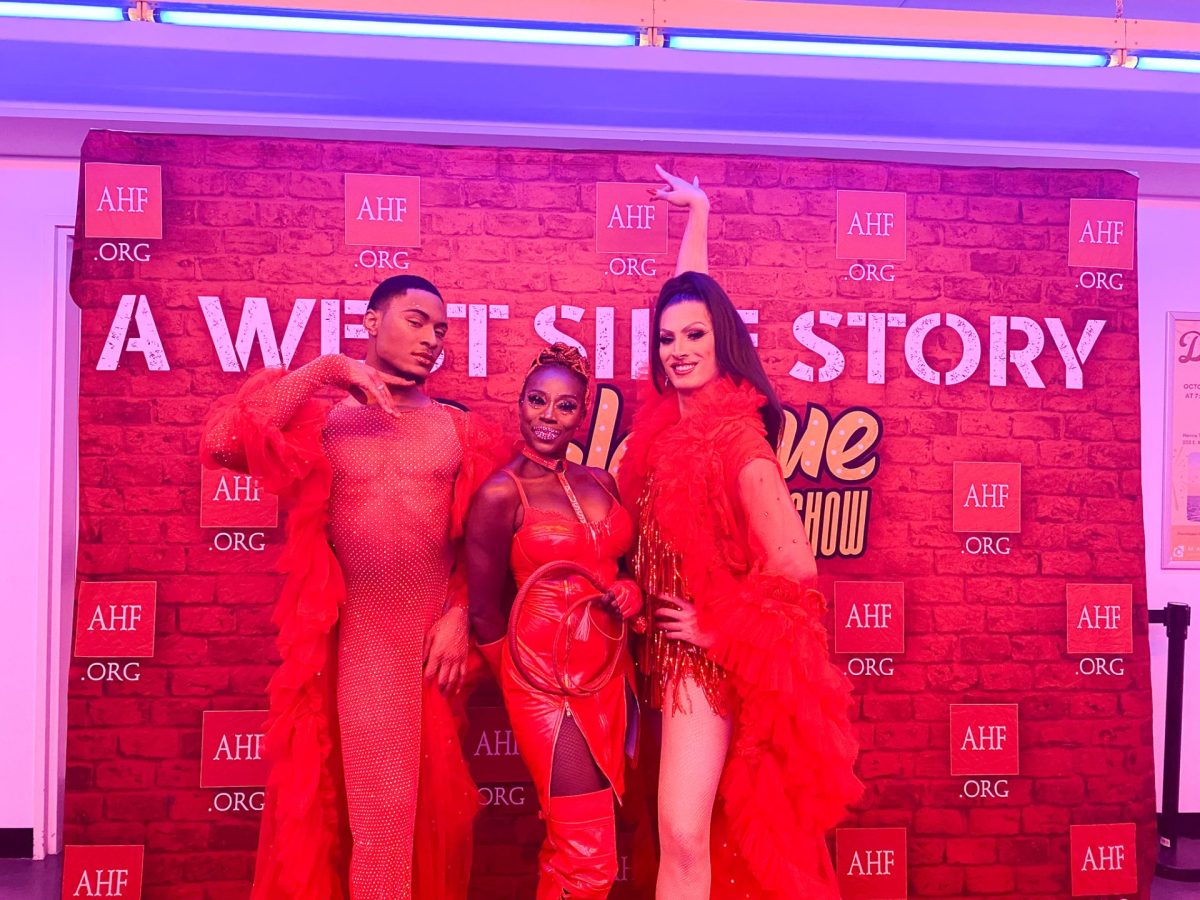
Audience member Erica Young, who attended in support of a friend involved in the show, said she enjoyed AHF’s approach to sexual health education.
“I liked how they eliminated all of the excuses [not to use sexual protection] throughout the show in a way that doesn’t make you feel guilty,” said Young. “They incorporated it in an interesting way that was like, ‘you can still be sexy and have fun’.”
Jumana Odeh, who also attended the show said that she resonated with the pure fun and alacrity of the show.
“I’m really big on West Side Story and burlesque,” she said. “I love theater, so I had to come see it [the show] and it was absolutely amazing.”
Alvarez said that partnering with CALOR, an affiliate of AHF, was an easy process given their aligned values. He deeply appreciates the partnerships AHF can make with other educational organizations.
Dance is an effective way to express love, Ferguson said.
“I think the common theme we express through dance is that all love is right,” Ferguson said. “If you love someone, you want to try to protect them, and what better way to protect them than to keep them from getting diseases?”




